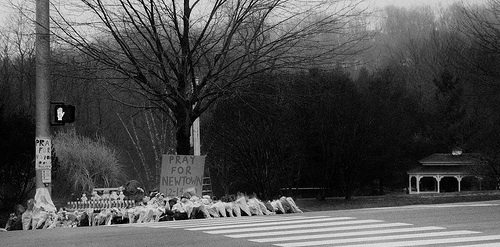
July 17, 2013; NBC Connecticut
While much of the money raised for relief of the victims of the shooting at Sandy Hook Elementary School went straight to the Newtown-Sandy Hook Community Foundation, Department of Consumer Protection commissioner William Rubenstein says that there were a minimum of 70 or so entities that collected approximately $21 million dollars, and that many of those were not registered as charities. In April, the state started trying to track them all down through a survey process. “They have to spend the money in the way it was intended by the donors to be spent,” said Rubenstein.
Sign up for our free newsletters
Subscribe to NPQ's newsletters to have our top stories delivered directly to your inbox.
By signing up, you agree to our privacy policy and terms of use, and to receive messages from NPQ and our partners.
For instance, George LeGrice’s charity ride raised $27,000, but $7,000 of that went to overhead for the event. He was slow to respond to the state, but LeGrice said that he “definitely wasn’t ignoring them. Once I sat down [and] clocked out for a few hours, I was like ‘okay, what exactly can I send you, what do you need, what can I get you right now?’ And I took a night off from work…and rifled through my email because I’m not the most organized person in the world.”
“A lot of these organizations are newly formed. They’re not used to what all the requirements are. They don’t have a staff. Sometimes it’s just some people hanging around their kitchen who thought they were doing a good thing,” said Commissioner Rubenstein.
The Sandy Hook Family Healing Fund, for instance, collapsed, and in June it informed the AG’s office that it would “…return all checks back to the donors and donate all cash received to an alternate Sandy Hook Fund.”
A new central fund, called the Coordinated Assistance and Recovery Endowment, or CT CARE, has now been established by lawmakers. Governor Dannel Malloy’s office has announced that it will accept donations in the aftermath of tragedies, but with all of the new ways of giving, it will be interesting to see how that is used.—Ruth McCambridge













